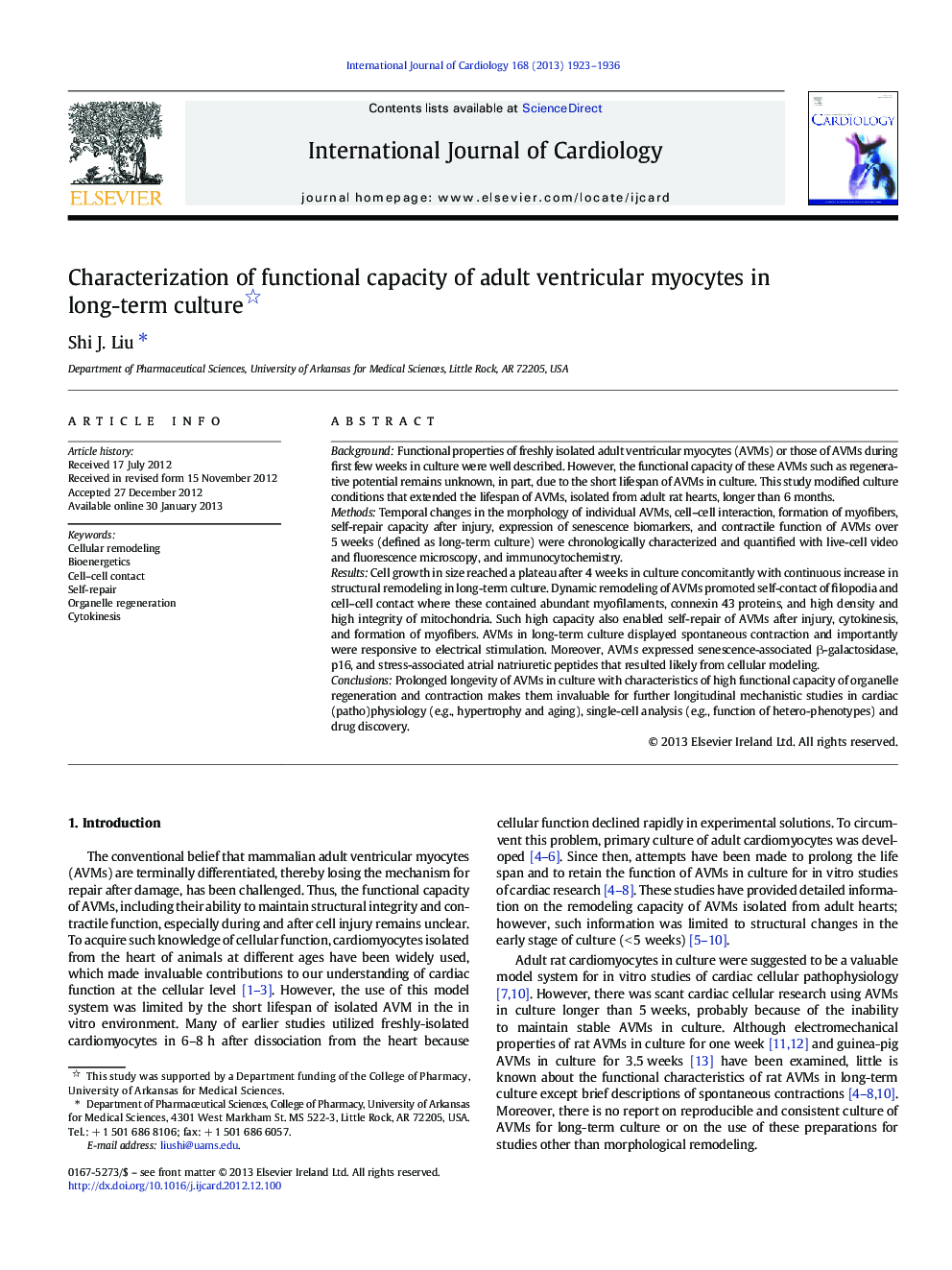| کد مقاله | کد نشریه | سال انتشار | مقاله انگلیسی | نسخه تمام متن |
|---|---|---|---|---|
| 5976137 | 1576209 | 2013 | 14 صفحه PDF | دانلود رایگان |

BackgroundFunctional properties of freshly isolated adult ventricular myocytes (AVMs) or those of AVMs during first few weeks in culture were well described. However, the functional capacity of these AVMs such as regenerative potential remains unknown, in part, due to the short lifespan of AVMs in culture. This study modified culture conditions that extended the lifespan of AVMs, isolated from adult rat hearts, longer than 6 months.MethodsTemporal changes in the morphology of individual AVMs, cell-cell interaction, formation of myofibers, self-repair capacity after injury, expression of senescence biomarkers, and contractile function of AVMs over 5 weeks (defined as long-term culture) were chronologically characterized and quantified with live-cell video and fluorescence microscopy, and immunocytochemistry.ResultsCell growth in size reached a plateau after 4 weeks in culture concomitantly with continuous increase in structural remodeling in long-term culture. Dynamic remodeling of AVMs promoted self-contact of filopodia and cell-cell contact where these contained abundant myofilaments, connexin 43 proteins, and high density and high integrity of mitochondria. Such high capacity also enabled self-repair of AVMs after injury, cytokinesis, and formation of myofibers. AVMs in long-term culture displayed spontaneous contraction and importantly were responsive to electrical stimulation. Moreover, AVMs expressed senescence-associated β-galactosidase, p16, and stress-associated atrial natriuretic peptides that resulted likely from cellular modeling.ConclusionsProlonged longevity of AVMs in culture with characteristics of high functional capacity of organelle regeneration and contraction makes them invaluable for further longitudinal mechanistic studies in cardiac (patho)physiology (e.g., hypertrophy and aging), single-cell analysis (e.g., function of hetero-phenotypes) and drug discovery.
Journal: International Journal of Cardiology - Volume 168, Issue 3, 3 October 2013, Pages 1923-1936